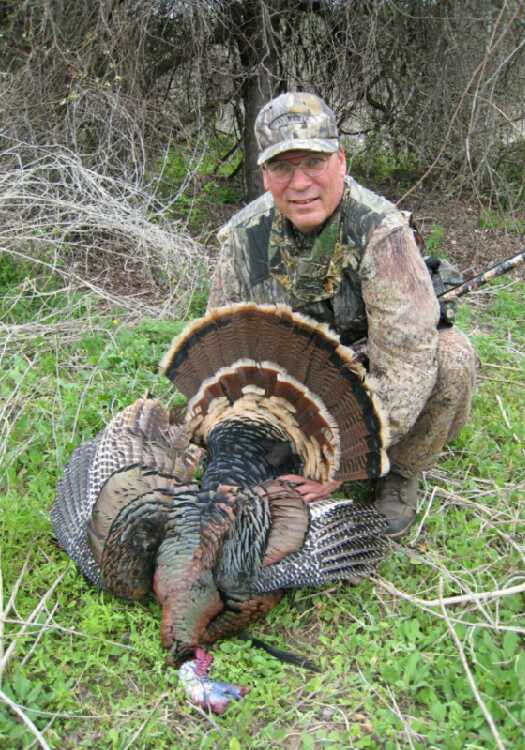It seems there has always been, and probably always will be, a debate as to whether or not 22 caliber center fire cartridges are adequate as “deer” rounds. With the recent introduction of new bullets, ammunition and cartridges the issue is getting more and more attention. In the state of Texas 22 center fire cartridges are legal for hunting deer. The TP&W Outdoor Annual states under the “Means and Methods” section concerning firearms: Game animals and game birds may be hunted with any legal firearm, EXCEPT: white-tailed deer, mule deer, desert bighorn sheep, and pronghorn antelope may NOT be hunted with rim-fire ammunition of any caliber. Personally I believe anyone hunting deer or similar game with a rim-fire round should be beaten thoroughly and have their trigger finger chopped off at the knuckle. There is no excuse for this highly unethical practice in today’s hunting environment. Outside of the center fire rounds being legal there is also the issue of these rounds being ethical. I believe they are within their limitations. Cartridges such as the 223 Remington, 22 –250 Remington, 220 Swift and the new 223 WSSM (Winchester Super Short Magnum), commonly thought of as varmint rounds, can quickly and humanly take deer. Provided the hunter is willing to be patient and accurately place his or her shot.
Winchester and Federal are currently cataloging 22 caliber rounds marketed as suitable for light thin-skinned game. Winchester has two offerings one in 223 Remington and the other in 223 WSSM. Both loads share the same bullet, a 64-grain Super-X Power Point (SX-PP). Winchester even has a picture of a deer on the end of the box of these loads. Speer’s 55-grain Trophy Bonded Bear Claw (TBBC) is the bullet Federal uses in its loads for this category. One in 223 Remington as well as one in 22-250 Remington. I did check the Remington catalog, but found no loadings being marketed as “deer” rounds in any of their 22 caliber center fire offerings. I also didn’t find any loading for the 220 Swift by any manufacturer being recommended as a “deer” load. The bullets mentioned above in the Winchester and Federal factory loads are also available for hand loading. Another 22-caliber “hunting “ bullet is the 60-grain Partition from Nosler. I was curious to see how these cartridges stacked up on paper to the more traditional rounds commonly thought of as suitable for deer. The results can be seen in the following chart.
| Cartridge Description | Muzzle (fps)/(ft lbs) | 100 (yards) | 200 (yards) | 300 (yards) |
|---|---|---|---|---|
| Winchester, 223 Rem 64-gr SX-PP | 3090/1357 | 2684/1024 | 2312/760 | 1971/552 |
| Winchester, 223 WSSM 64-gr SX-PP | 3600/1841 | 3144/1404 | 2732/1061 | 2356/789 |
| Federal, 223 Rem 55-gr TBBC | 3100/1175 | 2630/845 | 2210/595 | 1830/410 |
| Federal, 22-250 Rem 55-gr TBBC | 3600/1585 | 3080/1155 | 2610/835 | 2190/590 |
| Remington, 22-250 Rem 55-gr PSP* | 3680/1654 | 3137/1201 | 2656/861 | 2222/603 |
| 220 Swift 55-gr ** | 3900/1857 | 3469/1469 | 3079/1157 | 2721/904 |
| Winchester, 270 Win 130-gr | 3050/2685 | 2828/2309 | 2618/1978 | 2416/1685 |
| Federal, 7mm-08 Rem 140-gr | 2800/2440 | 2610/2135 | 2430/1840 | 2260/1590 |
| 30-06 Springfield 165-gr *** | 2800/2872 | 2579/2463 | 2367/2053 | 2167/1720 |
- * Load is shown for data purposes only. Remington makes no recommendation of this being a “deer” load.
- ** Personal hand load I use in my 220 Swift.
- *** Personal hand load I use in my 30-06 Springfield.
All cartridges have certain limitations and the 22 center-fires are no exception. Even with the factory ammunition and bullets of more robust construction and slightly heavier weights in some cases. These rounds still lack some of the aspects more traditional cartridges have always had. The obvious is caliber. Which lacks frontal diameter and weight. The frontal diameter being small means, even if the bullet performs well and mushrooms properly wound channels will likely be small. Being lighter weight these bullets will have less momentum to penetrate thru bone and less likely to give a reliable exit on less than favorable angles thru the body. Another disadvantage to lightweight bullets is their inability to retain energy over long distances. Even with the high muzzle velocities energy drops off significantly after 100 yards. Another factor to consider is lightweight bullets are also more subject to the effects of wind, rain, and other in field elements. This reduces the effective range of what was a 300-400 yard coyote rifle to around 100-200 yard maximum hunting rifle requiring critical shot placement. With all these factors stacked against these little cartridges. Why would anyone consider them for hunting deer? Some are drawn to a challenge, but I think it’s mainly because these cartridges are generally accurate and felt recoil is very light. We’ve all seen hunters using larger rounds and “jerking” the trigger or “flinching” in anticipation of the recoil. I believe a person should hunt with a gun they can shoot accurately and put power second, given the cartridge is adequate for the game they are hunting and the situation. One well-placed shot is far better than five or six poorly placed ones. I’ve said many times all the power in the world is wasted if not placed properly.

Theories and on-paper ballistics of 22 CF rounds are good for discussion purposes, but what really counts is how they perform in the field. I’ve used my 220 Swift to take a number of white-tailed doe. The breaking of dawn one particularly cold December morning in the 2002-2003 hunting season found me seated in box blind waiting for an opportunity to fill a doe tag. As light began to gradually filter over the frost covered grass and sparse Mesquite bushes I saw 3 white-tailed doe moving through the cover. I picked out the largest of the 3 and began to wait for right opportunity for a shot at her. She was standing face on about 70 yards away with her head up. I settled the cross hairs of the scope just below the white on her neck and began to squeeze the trigger. A sudden flash of orange and it was all over. She collapsed in the grass and never moved. Upon inspection, I found several of the vertebrae in her neck had been destroyed and the major arteries had been ruptured. About a month later while hunting wild hogs in east Texas. I decided to try for a hog with my Kimber 84M Varmint in 22-250 Remington. Just before dark, perched in a blind overlooking a field adjacent to big bottom. I saw several hogs enter the field from the thick cover about 200 yards from me. One was a nice sow around 200 lbs or so. I watched her for several minuets as she was feeding and moving up the hill towards me. Once she had worked her way within about 100 yards. I shouldered my rifle and prepared to take a shot. I watched her through the scope until she put her head down to feed. She never heard the report of the rifle as the little bullet struck her between the eyes, killing her before “quick” could get started. Wild hogs are some of the hardest animals to bring down cleanly. I’ve taken a number of them with my 22-250’s, all head and neck shots I might add, and have yet to have one take a step. My good friend and hunting partner “Wild Bill” used his DPMS Panther Extreme Super Bull in 223 Remington to cleanly take a large doe on one our hunting trips. The doe was 85 yards from him as he touched off the shot. He placed the shot through her chest. Upon entry the bullet stuck the shoulder blade, which is not what you want, but it still broke into the chest cavity. Proving that these little bullets have more penetration capabilities than I originally gave them credit for having. The doe staggered a short distance and fell. When we field dressed her the damage done to the vital organs far surpassed what is commonly found with much larger rounds like the 270 Winchester or 30-06 Springfield.
I’m not trying to recommend everyone run out and start using one of these 22 rounds for their uses, quite the contrary, only to realize the effectiveness of these cartridges when properly used and the challenge of hunting with them. Hunter’s are always looking for challenges, which is why the number of Archery and Handgun hunters is on the rise. Hunting with a 22 center-fire challenges hunters to make precise shot placements and to be honest with themselves and their abilities. Also being aware of the bullets construction and how that bullet will perform on game. This means waiting for the right opportunity or passing the shot all together. Things we should all do regardless of what we choose as a hunting tool.
